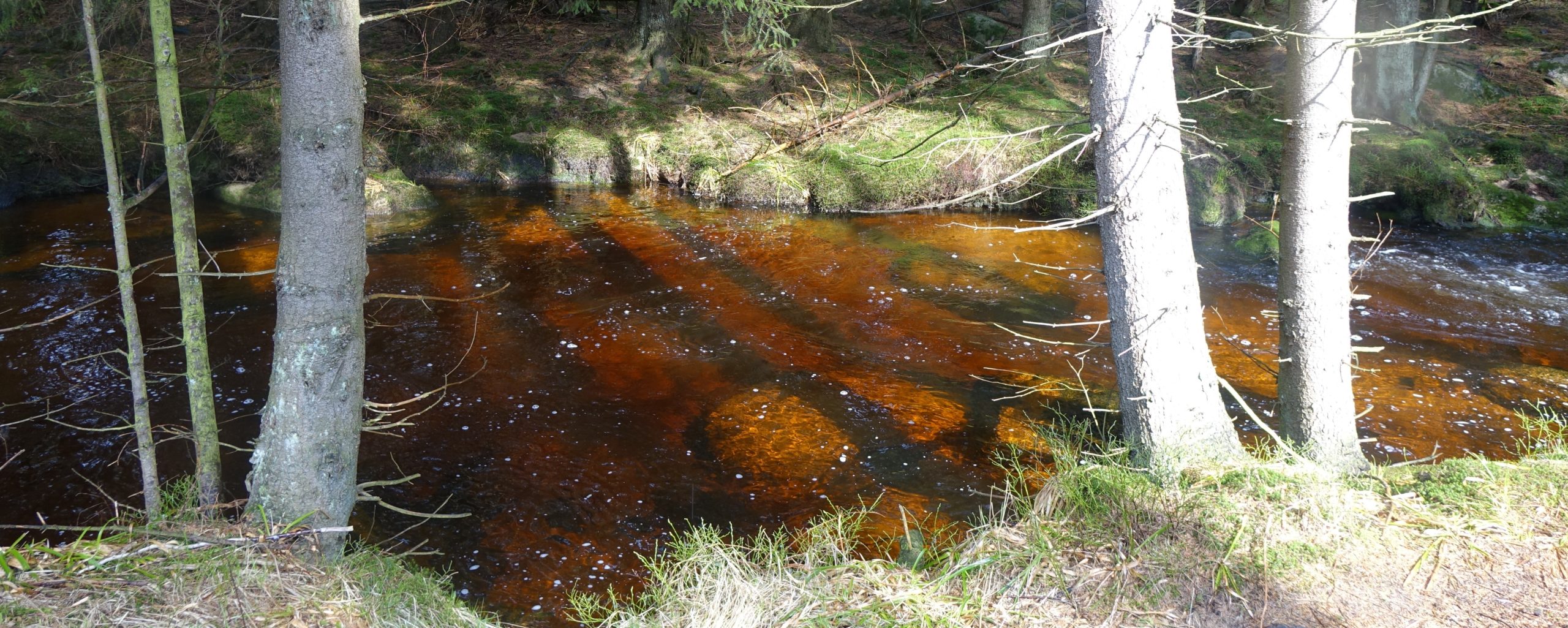
Towards understanding ecological disaster in the Harz Mountains (Central Germany) by carbon tracing: pyrolysis-GC-MS of biological tissues and their water-extractable organic matter (WEOM)
By Joeri Kaal, César Plaza, Marta Pérez-Rodríguez and Harald Biester
Abstract
Streams and reservoirs in the Harz National Park experience high dissolved organic matter (DOM) concentrations, the cause of which is unknown. We studied potential sources of DOM by means of pyrolysis-GC-MS (Py-GC-MS). The biological materials include vegetation samples (spruce, birch, blueberry, heather, sedge, grass, peat moss, epiphytic moss), microbial sources (epilithic biofilm, lichen, fungi) and excremental fabric. In addition to ground biological samples (bulk organic matter; BOM), their leachates (water extraction of BOM samples followed by filtration; WEOM) were analyzed, to obtain knowledge on solid-liquid transfer effects. Results of BOM showed potential for molecular provenancing on the basis of relative proportions of major biopolymers (lignin, polysaccharides, tannin, resin, etc.) and specific products (biomarkers). Even though WEOM had lower molecular diversity than BOM, identified molecular features of WEOM can be useful to identify potential sources of environmental DOM. Unsubstituted guaiacol prevails among the pyrolysis products of the WEOM of spruce samples (especially wood), which probably originates from pyrolytically decarboxylated vanillic acid moieties. The other plant materials produced a more diverse fingerprint of phenols, guaiacols and syringols, which can be used to distinguish gymnosperm-derived DOM, peatland vegetation and angiosperm trees and shrubs. Several other O-containing moieties such as benzoic acids, benzaldehydes and indanones (not present in BOM) were also frequent products of WEOM. These results lay the foundation for future interpretations of environmental DOM samples’ molecular fingerprints.
Keywords: Harz Mountains; dissolved organic matter; Py-GCMS; biological sources.
ISSN: 2659-5605 (Analytical Pyrolysis Letters)


